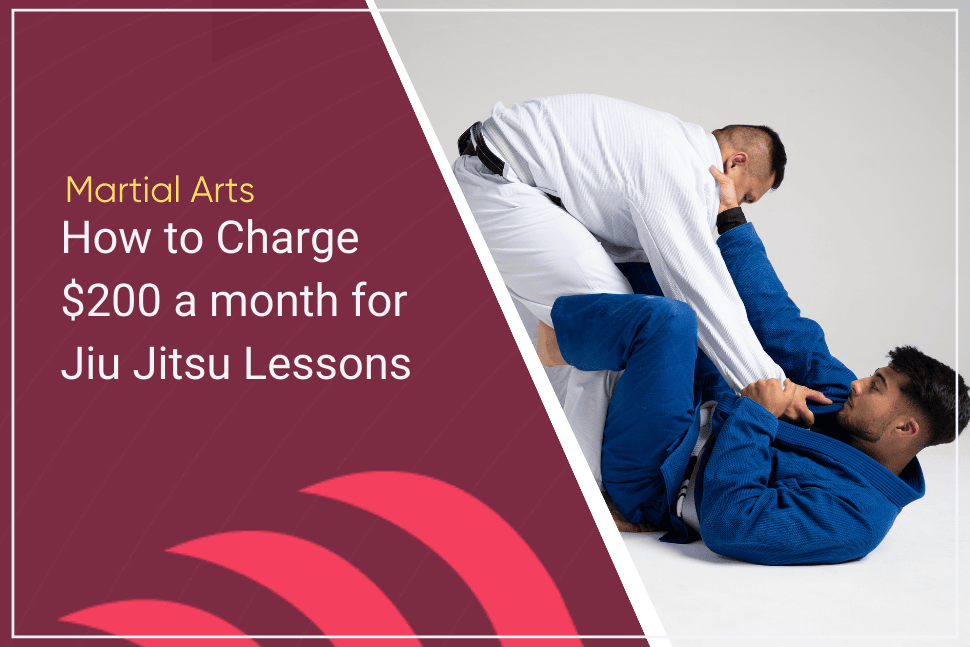Attendance Tracking Methods for Martial Arts & Gym Businesses

Attendance is an often underrated tracking metric in martial arts schools and gyms. It’s not just a datapoint on making sure they don’t take too many classes (although those are important)…
It’s a vital metric to understand which classes are the most popular, and if new classes need to be added or old classes cut. It can also feed into gamification systems to reward students for showing up to training, such as points accrual, badges and patches, student of the month recognition, and so on.
Most important of all, minimum attendance numbers can be used as one of several metrics to determine when a student is ready for the next belt.
The opportunities for how to use attendance tracking are nearly endless. Regardless of the reasons why, the fact is you should definitely be tracking attendance. In this article, we’ll cover some of the most common systems and how you can make them work for you:
- Attendance Cards
- After-Class Group Pictures
- Personal Attendance Notes
- Front Desk Sign-In
Common Methods of Tracking Attendance
Over the years, I’ve experienced several methods implemented by martial arts instructors to track student attendance. Most of them make clever use of systems and student behavior to make the process more reliable and less taxing on the instructor, who is trying to focus on teaching a great class. No matter how clever the system, however, each comes with advantages and disadvantages.
Attendance Cards
I remember my first martial arts class. The program manager wrote my name on a card with a long grid of squares representing dates. I then lined up for class, and the instructor collected all those cards and gave them back to the program director to mark for attendance. From that day forward, I went to a card holding panel on the wall in the back of the school before every class, collected my card, and that process repeated.
This method is great because it places the responsibility of gathering that card on the student and not the instructor. Marking attendance later is nearly an automatic act and easily delegated to another worker. I’ve trained in many schools since my first martial arts experience, and this method seems to be quite popular.
The downside to this is that sometimes students come in late, and, in the chaos of running a class in full swing, you can forget to remind a student to collect her card if she forgets it. If you also mark attendance in a digital system, this can multiply the busywork you have to do by marking both the card and manually interesting this information into the digital system. You have to manually process this card by card, so depending on your membership numbers, you could be working through 60 cards or more per night.
Taking After-Class Group Pictures
Some instructors take a picture after each class. This works great to post to social media every day as well as a record to refer to when manually recording attention after the fact. It’s easier than taking hand notes or gathering cards.
However, sometimes students have to leave early for class, which can leave gaps. And the busywork of manually entering names into a ledger or digital system is only deferred until after class. This process, like the previous one, is very manual and can be as painstaking as it is time-consuming.
Personal Attendance Notes
This was one of the methods I employed when I taught taekwondo out of my own club. I would write down the names of everyone who came and sometimes inter that information into a digital system.
The upside to this is that you are in complete control of attendance tracking and not reliant on someone else’s attention or lack thereof to record (I also had a program manager take attendance manually for me in a past job). The downside is that if you have later students, or you forget to write down names at all, your attendance tracking can get screwed up. And, if you also use a digital system, your busywork is doubled.
Electronic Sign-in
This is perhaps the most progressive and least instructor-intensive method of tracking attendance. Keep a tablet or other device open in the school at all times so that students can sign in with their own codes before class with a numerical code. Like the attendance card system, this requires training students from the beginning; it also requires that you have an operational device at the front desk at all times.
Here at Martial Arts on Rails we consider this a core feature to our product. Members can check-in by searching for their names if they forget their 4 digit code. Simply place your manager account into “Font Desk Mode” on a tablet or other device, and it’s ready to do most of the attendance tracking for you.
While instructors can verbally check each student to make sure they’ve signed in, the distraction of running classes can sometimes allow for students to slip through the cracks due to being late or simply forgetting to sign in....
To help solve this problem, an instructor of mine would remind students before class to sign in, then take a picture of the whole class after training when all the stragglers had shown up. That way he could compare the records in the system to the people in the picture and not rely on memory or perfect attention during his teaching time.
Make Things Easier on Yourself
Our martial arts school management software also provides a unique power feature that allows instructors to conduct mass sign-ins after class. If you use the personal notes, after class picture, or attendance card systems, this feature is perfect to cut down on the busywork of putting all that into a digital system.
check in
By default, the system will pull up only members that should be able to check-in to the selected class, by their membership and rank. You then just need to select the members who actually attended and click on the confirmation button.
The advantage of an attendance system fully integrated with the rest of your martial arts school management is that it works seamlessly with tracking towards rank promotions and other milestones.
You can define promotion requirements for each rank, using time tracked, number of sessions attended, time in rank and even skill requirements, all of which are managed from one place to simplify things.
Because our marketing and scheduling features are all fully integrated with one another, we can also automatically send out emails and texts to students who’ve missed too many classes on your behalf. You can customize that message and when it will be sent from your manager dashboard. This is a powerful and personalized way to re-engage students who might be at risk of cancelling without adding extra workload for you or your staff.
Conclusion
Attendance tracking is a powerful tool for martial arts instructors to understand who is eligible for promotion, when classes are doing well or poorly, and which members are progressing and which are starting to get left behind. It can also become a way to incentivize showing up for class through attendance-based rewards.
The methods we covered were:
- Attendance Cards
- After-Class Group Pictures
- Personal Attendance Notes
- Digital attendance tracking
As we provide gym management software, it shouldn’t come as a surprise that we believe digital attendance tracking is the most effective of the bunch. You can learn more about our attendance tracking features here.
Gym management software that frees up your time and helps you grow.
Simplified billing, enrollment, student management, and marketing features that help you grow your gym or martial arts school.





